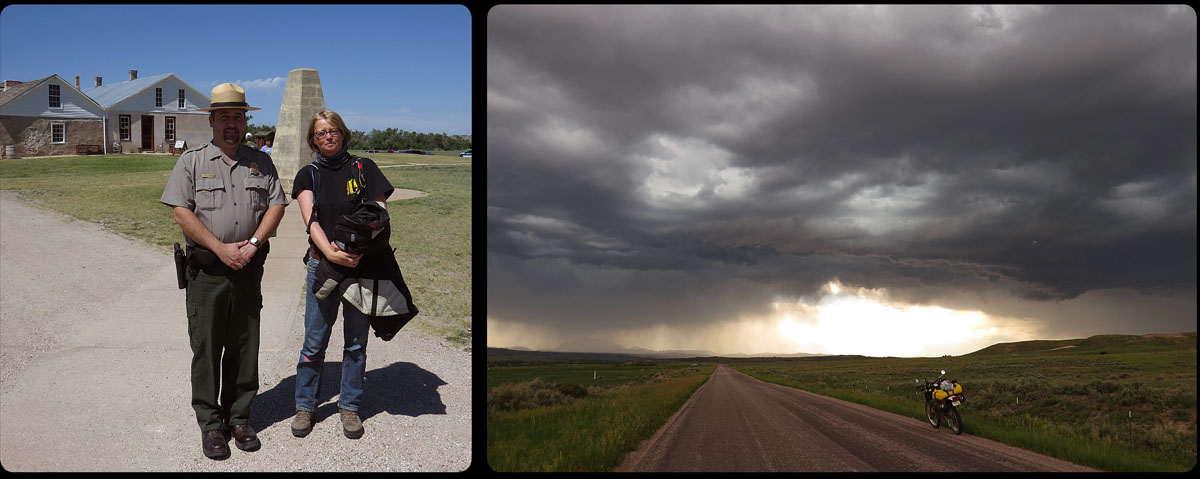‘.. Brought us in view of the post of the American Fur Company, called Fort John, or Laramie…It is on the left bank, on a rising ground some twenty-five feet above the water; and its lofty walls, whitewashed and picketed, with the large bastions at the angles, gave it quite an imposing appearance…’ These are the words of John C. Fremont, one of the most important explorers of the American West.
Yesterday I paid a visit to this fort. First called Fort William, then Fort John and finally Fort Laramie, it was built on a strategically chosen point on the Laramie River in Wyoming, just before it joines the Platte River.
Originally built in 1834 as a trading post, where Indians could trade furs for blankets, knives, food and liquor with white traders,in later years the fort became very important as a military and supply post in the Indian Wars.
In the days of the Oregon Trail it was an important resting place. It was estimated that in 1847 between four and five thousand emigrants visited the fort. Quite a lot, if you consider that the only right time to travel was a few weeks in early summer. The travelers could fill up on supplies, repair the wagons in the blacksmith’s shop, send mail to family and friends, ask advice about the condition of the road ahead and trade goods with the Indians that were camped around the fort.
Before the emigrants went back on the road, they bought a lot of supplies. They didn’t realize, however, that they were about to cross the Black Hills. Very soon it became clear how ignorant they were, bringing along so much extra weight in their wagons. They tried to sell most of the goods, but everybody had the same problem, so a lot of supplies were simply dumped by the side of the road.
An emigrant on his way to the California gold mines wrote in 1849: ‘We begin to see the preparations made by the overloaded trains for crossing the Black Hills – piles of bacon lying by the roadside, some must have 2000 or more lbs, beans -corn – all kinds of iron implements & cook-stoves etc -etc- One train we passed told us they threw away over a ton of bacon – several barrels of bread – six dozen steel shovels – axes, hoes, etc – etc – amounting in value to nearly 1500 dollars.’
I crossed the Black Hills too, but I took a more southern route than the original trail. Because of my extended visit to Fort Laramie I was somewhat behind on my 90 miles-per-day schedule so I decided to take a faster road instead of the planned dirt road.
It was frustrating to see that the road I chose as an alternative -which on the map seemed to be a nicely paved road- suddenly changed into a gravel road. To add some excitement to the day, I rode right into a very dark sky that dumped its wet content on me not long after.
Despite all this I didn’t regret not choosing the even faster route by highway. The rain didn’t last very long, and this area really looked like paradise. The dirt road took me along lush green hills full of flowers. I even met a few pronghorn, and I saw two white tail deer run away into the fields.
I felt alive and enjoyed everything around me, even the dark blue storm clouds on the horizon that couldn’t seem to decide which way to go.
At some point the dirt road started to get very rough. To my own surprise I managed to get through this plowed field of stones (that’s what it resembled most) intact, and not long after that, the road was once again covered with gravel and I could make a few miles.
One hour later I was sitting in the sunshine on a campground in Douglas, tired but satisfied. Just another boring day at the office…

